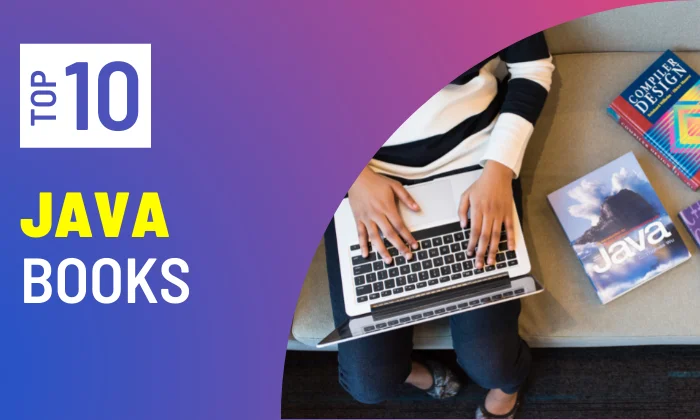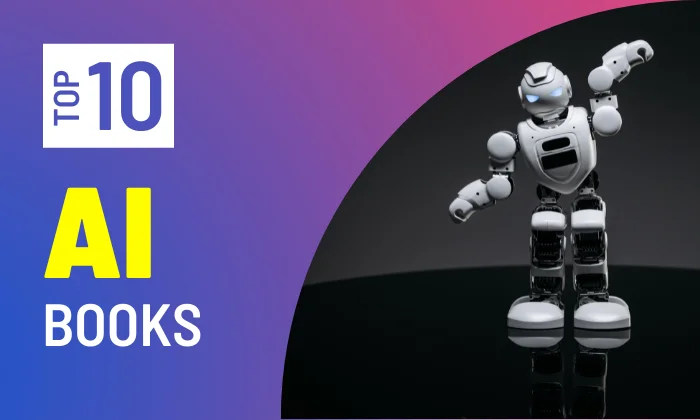These are the top 10 Java books that will help you learn and implement Java.

1. Java: Learn Java in One Day and Learn It Well. Java for Beginners with Hands-on Project
Having been a bit scared due to the technological complexities of programming, you were always eager to learn about computer programming. Also, you have no experience with other programming languages but want to learn Java quickly. Well, no worries this book got you’re back covered. Difficult steps are reduced into simpler concepts for you to understand easily. The topics have been specifically selected to provide you with a wide understanding of Java whilst avoiding information overload. Object-oriented programming concepts, error management strategies, file management techniques, and other topics are covered. To appeal to the busy individual, concepts are presented in a “to-the-point” manner. You won’t have to sit through boring and long Java textbooks that will put you to sleep. You can learn Java swiftly and begin coding really quickly with this book.
2. Learn Java: A Crash Course Guide to Learn Java in 1 week
This book is the perfect crash course in Java programming for amateurs, as it will teach you everything you need to know in just one week. For starters, Java is undoubtedly the most well-known programming language, and it is in high demand almost everywhere. A skilled Java programmer is constantly needed on any social networking site. As a professional in the sector, you have access to the entire globe, as demand is never limited to a specific geographic location. This book is the ultimate roadmap for moving from a person who is largely unfamiliar with programming to someone who can teach the topic and execute good programming projects.
3. Beginning Programming with Java for Dummies (Computer/Tech) 5th Edition
This masterpiece is your go-to book for learning one of the most popular programming languages. Beginning Programming with Java for Dummies is a book developed primarily for programmers who are new to the field. The book begins with an overview of computer programming and progresses from there, explaining the software you’ll need, guiding you through the process of building your programs, and introducing you to some of the more advanced parts of Java programming. It also offers step-by-step instructions that you may follow on your own. This book explains all of the foreign programming and computer programming techniques, structures, and syntax in plain English, with many examples and recommendations.
4. Introduction to Java Programming and Data Structures, Comprehensive Version 11th Edition
This book covers fundamentals-first problem-solving and object-oriented programming ideas to complement a beginning programming course. Amateur programmers learn fundamental problem-solving strategies but skip these important aspects of programming like; object-oriented programming, GUI programming, data structures, and Web programming. This course teaches Java GUI programming using JavaFX, a new GUI tool for constructing cross-platform-rich Internet applications that is easier to learn and use than Swing. The new and expanded text, examples, and exercises in the 11th edition have been entirely updated to improve clarity and presentation.
5. Starting Out with Java: From Control Structures through Objects 7th edition
Well, this one book is a step-by-step guide to starting with Java programming. To make students’ minds more creative for programming and problem solving, Gaddis introduces procedural programming—control structures and methods—before teaching object-oriented programming. All chapters include easy-to-read and clear code listings, brief and useful real-world examples, and a plethora of exercises, as with other Gaddis texts. The manual takes a step-by-step strategy to teach Java, with each chapter addressing a main set of concepts and gaining knowledge. It is written in a clear, friendly, and easy-to-understand style.
6. Java Pocket Guide: Instant Help for Java Programmers 4th Edition
This pocket guide is an excellent reference for typical features of the Java programming language and environment whenever you need quick answers for designing or troubleshooting Java programs. You’ll discover quick access to useful programming examples, tables, figures, and lists, as well as Java 9 features like modular source code and the new JShell interactive command-line REPL. Whether you’re in the office, the lab, or on the road, it’s a useful companion. This book includes study materials for the Oracle Certified Associate Java Programmer test. Moreover, it helps you learn about the Java SE platform’s development fundamentals, memory management, concurrency, and generics. You can use Java 9’s new capabilities, such as modular source code and JShell as well as explore the basics of input/output, NIO 2.0, the Java collections framework, and the Java Scripting API.
7. Murach’s Java Programming (5th Edition)
The 5th edition of Murach’s Java Programming helps you learn Java faster than ever. This detailed book easily explains the concepts related to inheritance, polymorphism, and interface. It now includes new sections on JavaFX, the date/time API, lambdas, and SQLite databases. It employs a self-paced strategy that works whether you’re new to programming or have years of experience. It’s chock-full of real-world coding examples that will help you learn how to code and give you a head start on new projects. It allows you to put what you’ve just learned into practice at the end of each chapter, allowing you to improve your skills.
8. Java: The Complete Reference Twelfth Edition
Java: The Complete Reference, Twelfth Edition is fully updated for Java SE 17 and covers how to write, compile, debug, and run Java programs. The author, covers the complete Java programming language, including its syntax, keywords, and basic programming ideas. You’ll also find details on I/O, the Collections Framework, the Stream Library, and the Concurrency Utilities, which are all important parts of the Java API library. Swing, JavaBeans, and servlets are discussed, and various examples show how to use Java. Of course, current Java language enhancements like records, sealed classes, and switch expressions are covered in depth. Most importantly, the book is written in Schildt’s trademark clear, sharp, and uncompromising style, which has earned him a favorite of millions throughout the world.
9. Effective Java 3rd Edition
Bloch discusses new design patterns and language idioms introduced including Lambda, streams, generics, and collections, as well as selected Java 9 technologies, in this updated version of Effective Java. Each chapter is divided into multiple “pieces,” each of which is presented as a brief, stand-alone article with specialized advice, insights into Java platform nuances, and updated code examples. Each item’s detailed descriptions and explanations reveal what to do, what not to do, and why. Techniques and best practices for traditional subjects such as objects, classes, libraries, methods, and serialization, methods to avoid the pitfalls and traps of widely misunderstood linguistic nuance, and concentration on the language and its most basic libraries, including java.lang, java.util, and, to a lesser extent, java.util.concurrent and java.io have been included.
10. Head First Java 2nd Edition
Learning a new language, especially a computer programming language like Java, is no easy undertaking. Head First Java engages you in a variety of ways by combining riddles, great visuals, mysteries, and soul-searching conversations with famous Java objects. It’s quick, enjoyable, and effective. Head First Java is a complete introduction to object-oriented programming and Java, despite its light-hearted presentation. Threads, network sockets, and distributed programming using RMI are just a few of the advanced topics you’ll learn about. The updated second edition focuses on Java 5.0, the most recent version of the Java programming language and platform. Because Java 5.0 is a big platform update with significant code-level changes, it necessitates even more thorough research and implementation. As a result, it’s more necessary than ever to learn the Head First method.
Stay tuned to AiHints for more insightful tutorials on web development, programming, and artificial intelligence. Happy coding!


